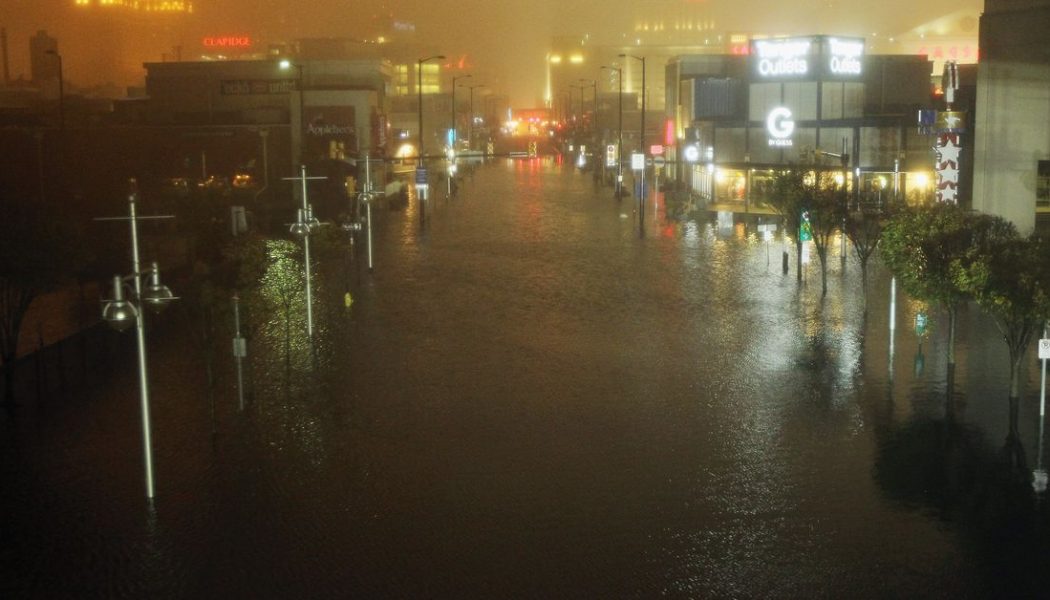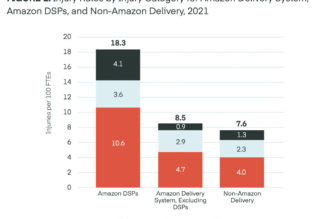
Coastal cities in the US could find themselves grappling with a new housing crisis in the coming decades. The number of affordable housing units vulnerable to flooding could triple by 2050 as the planet heats up, according to a new study. That amounts to more than 24,000 homes that could flood at least once a year by 2050, compared to about 8,000 in 2000.
The study, published today in the journal Environmental Research Letters, ranks the states and cities at greatest risk. Its authors also unveiled a new interactive map that people can use to see how their hometown might be affected.
As the world warms, seas rise. That means tides are creeping further ashore, and storm surges are becoming a bigger threat to homes along the coast. The encroaching waters are just one way climate change is transforming cities, and the dangers are piling up on lower-income communities.
“I hope this can guide policy that will help the people who are most vulnerable to coastal flooding, which is low-income people in affordable housing. We feel like we’ve really pinpointed that problem with this study,” said Benjamin Strauss, a co-author of the study who is also chief scientist and CEO of the nonprofit research organization Climate Central. Seventy-five percent of the affordable housing stock vulnerable to future floods is concentrated in just 20 cities. Those cities are where policymakers can make the biggest difference in residents’ lives by making housing there more resilient.
Many homes lining American coastlines are vulnerable to flooding — not just affordable housing. The researchers wanted to focus on homes for lower-income residents because they’re often older buildings that could have a harder time standing up to the stress of climate-related disasters. Residents here might also have less money and political clout to push for changes to infrastructure so that their homes are better protected. There’s already a shortage of affordable housing in the US, according to the nonprofit National Housing Trust, which contributed to the study. Climate change could make that situation worse.
New Jersey affordable housing residents fare the worst under the study’s projections for 2050. In the model, the state has the most units at risk of flooding at least once a year: 6,825, which is a fourfold jump from 2000. About 45 percent of those homes could see flooding up to four times a year. New Jersey’s Atlantic City ranks as the second-highest most vulnerable American city on the list, where more than half of all affordable housing could flood at least once yearly.
New York, Massachusetts, Virginia, and Florida complete the list of top five states where seawater encroaches on the greatest number of affordable housing units. Some cities and towns could see a greater proportion of their cheaper housing flood. While New York City has the largest absolute number of units at risk, those homes only represent a little over 1 percent of the mega city’s affordable housing stock. Meanwhile, the number of units at risk in Crisfield, Maryland, and Foster City, California, represent upward of 90 percent of affordable housing.
The authors of the new study had to bring together a broad range of data to come to their conclusions. They turned to databases of federally subsidized residential buildings and units rented below market rate in order to find affordable housing in the US. (They caution that there are probably private buildings that they missed that would be considered affordable housing even if they aren’t part of a federal subsidiary program. These are generally units that rent below market rates or at about 30 percent of median income levels in a particular location.)
The researchers were able to zoom in to see exactly how many units in a particular building might be affected, thanks to high-resolution building footprints made publicly available recently by Microsoft. “This was our first study using those footprints, which scientifically was very exciting for us,” Strauss says. That’s because similar studies had to make generalizations based on average housing and population densities for entire census blocks. Doing that, Strauss tells The Verge, is “like assuming that peanut butter is spread evenly on a piece of bread.” But the peanut butter — or, in this case, floodwater — isn’t typically perfectly evenly spread.
Their estimations, while very granular, are based on a worst-case scenario for climate change. Global commitments to address climate change should set the world on track for a less drastic scenario — if countries follow through on their promised cuts to greenhouse gas emissions. But because so much planet-heating carbon dioxide has already built up in the atmosphere, projections for sea-level rise within the next three decades don’t change much under a more optimistic forecast.
That makes efforts to adapt to climate change, which the authors hope their study informs, just as important as the fight to slow it down.










